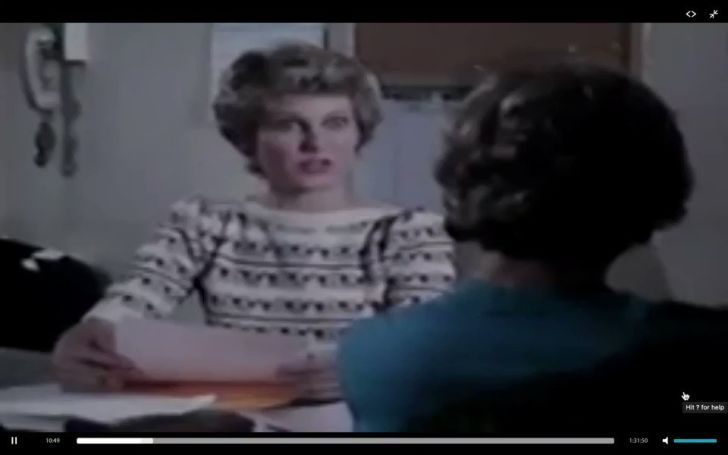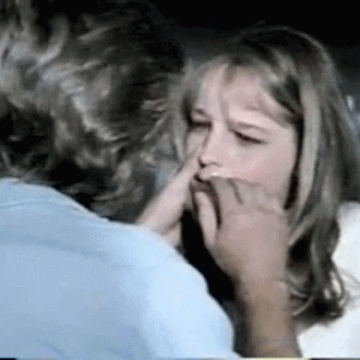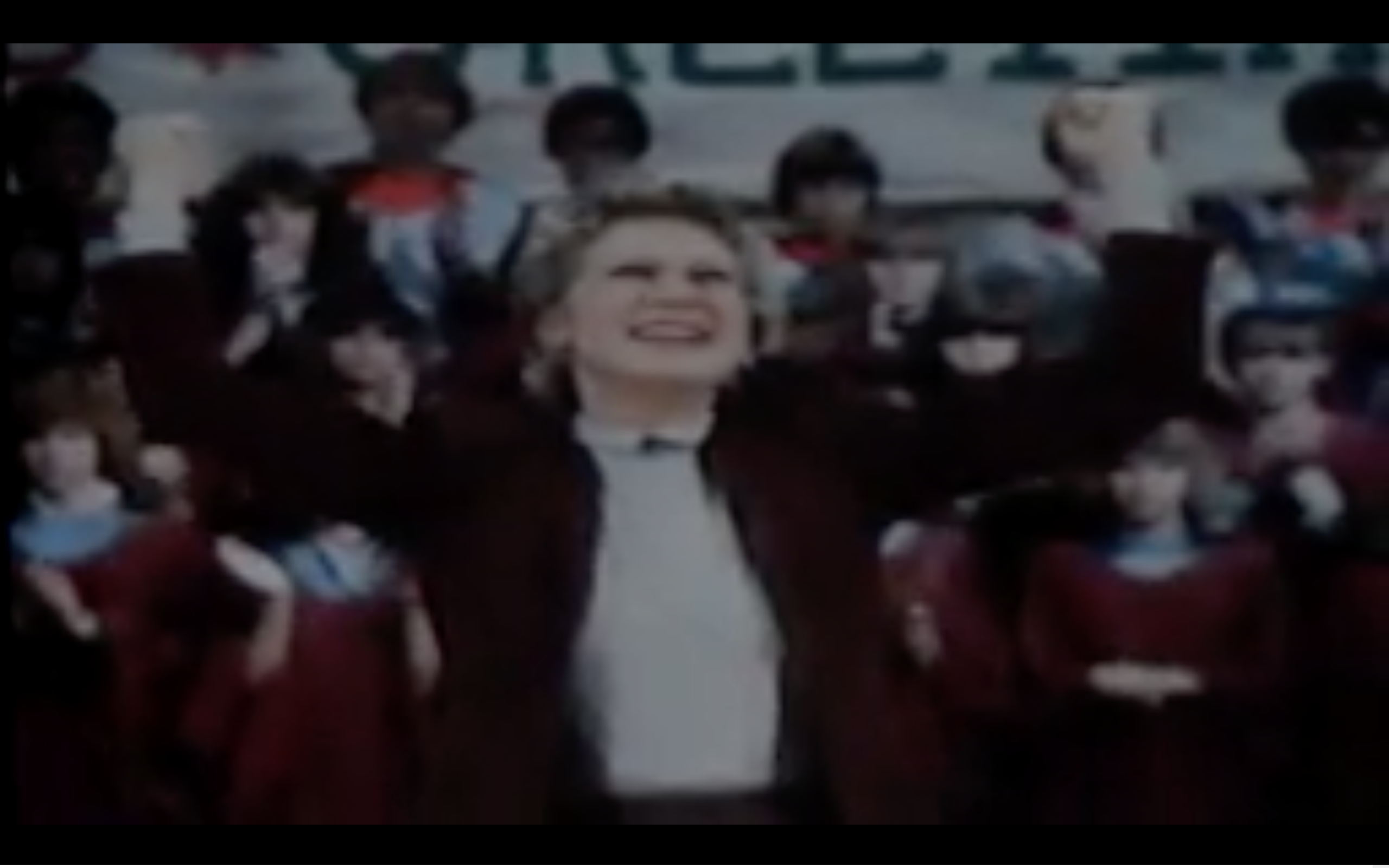My fever dream of a driver's ed course, and "Desperate Lives"
Being 16 was confusing.

In North Carolina, you can get your learning permit to drive at age 14, a fact that my mom reacted to with “That’s not true. That’s ridiculous.”
It is true, but regardless, when I reached 16 I revisited the topic and eventually got my mom to agree to sign my up for driver’s ed classes. All of my friends had taken the course offered through our school, but I couldn’t do so during the school year since I had rehearsals for school plays and musicals, and we didn’t sign up for the summer course in time because of course we didn’t.
My mom, at the end of her rope, opened up the phone book, turned to the driver’s ed section, and dialed up the one with the largest advertisement visible on the page without reading too closely. This was, I would realize on my first 8-hour day in a small classroom, a program aimed at juvenile delinquents.
My high school theatre teacher told me when I was applying to colleges that I belonged at “an all-girls school where the girls who smoke cigarettes are the bad girls” and that he envisioned me walking around campus “in a shirt that says ‘LEAVE ME ALONE’ on the front and ‘I CAN’T BE BOTHERED BY YOUR NONSENSE’ on the back.” I was not, if it’s not abundantly clear here, a juvenile delinquent.
But here I was, stuck in a class with a teacher who said things like “I know none of y’all are going to college” and spent more time on the road rage portion of the curriculum than anything else. I didn’t have any issues with the other students in class, who were presumably all either juvenile delinquents or people with confused mothers, but our teacher worried me. She warned us that road rage can take over immediately, like the time she snapped during a dispute with a coworker at the IBM factory and only remembers standing over her rival holding a computer part over her head while her friend shrieked “Hit her, Etta! Hit her!!”
On the last day of class, she just gave up on teaching altogether and just put on a movie to teach us about the dangers of operating a car under the influence. The 1982 made-for-television masterpiece that would not have been relevant to this discussion in 1982, as it is not really about driving. It was called Desperate Lives and it was a nightmare and watching it was easily the highlight of the course. My memories of the actual learning portion of the course are extremely fuzzy — I cannot, for instance, confirm that we had a textbook, although I’m sure we did — but I rewatched Desperate Lives and found that there were entire lines I remembered verbatim despite watching it one time 12 years ago. It’s powerful stuff!
Desperate Lives is about a young guidance counselor named Eileen Phillips, pronounced “Ahleen” because she’s from Tennessee, trying to tackle the wildly out-of-control drug problem at her new school. The teens there love to use (drugs, that is) because they think they can handle (the amount of drugs they’re using). Every teen in this movie is like “do you use?” and “I use, but I can handle,” and Ahleen Phillips is there to find out who’s using and let them know they can’t actually handle.
The very first scene in this movie is a drug deal in a graveyard. You can tell this is going to be a quality film because that’s both Foreshadowing and Symbolism. A group of teens roll up in what’s basically the Mystery Machine to get their fix from drug dealer and real 80s cool guy Ken Baynes. They’ve picked up impressionable young Scott Cameron along the way after seeing him skateboarding to school. Scott is fascinated by the group of older kids flocking around Ken’s enormous assortment of pills and powders. One babyfaced girl named Julie insistently asks for coke, but when Ken says it will be $50, she offers to come over to Ken’s place to “work it out.” Babyface Julie is offering sex in exchange for drugs! These teens are living very Desperate Lives.
Scott Cameron does not use… yet. But Ken Baynes gives him some marijuana for free. Scott’s older sister Sandy, played by a young Helen Hunt, tries to stop this exchange, but Scott points out that Sandy uses so he can too.
By the time the Mystery Machine rolls up to the school, Scott has already begun using. Specifically he smoked all the weed Ken Baynes had given him and is stoned as fuuuuuuuuck. It is in this condition that new guidance counselor Ahleen Phillips finds Scott stumbling around. “I’m Ahleen Phillips,” she says for the first time of several dozen in the film. Scott reminds her of her little brother back in Tennessee, so she decides to take him under her wing.
Once they get to the office, she finds Scott’s assigned counselor, introduces herself as Ahleen Phillips, and asks if she can take Scott because he reminds her of her little brother back in Tennessee. Unfortunately Scott is not so grateful. He’s coming down from a high and he’s ornery.
Ahleen convinces Scott to sign up for her swim team through the power of believing in him, but larger problems loom. At an all-school pep rally, teens openly puff joints in the bleachers. Ahleen is horrified, but the other teachers turn a blind eye! The high schoolers even openly cheer for drugs when the football coach uses the common phrase “We gotta get HIGH for this game” to mean “we need to bring our A-game to this sporting event!” Cheering for drugs!!
But when Ahleen brings it up to other teachers, she’s told the kids are a lost cause. She schedules a meeting with the principal, but he blows her off too. He’s two years away from retirement and has given up on the out-of-control drug use. “Resistance to drugs is like resistance to the dress code, or mastodons. These things are extinct!” he says, and I’m not sure that works grammatically but his point is clear and Ahleen is dejected.
In case you couldn’t tell that the stakes are as high as the student body, Ahleen’s swim team is horrified when a teammate’s lifeless body floats to the surface during practice. We are just about at the 20 minute mark. This movie means business. Ahleen performs CPR to revive the girl and asks the team what could have caused the girl to drown. “She’s just a dumb doper, Miss Phillips,” says one kid, and everyone shrugs and walks away even though they just witnessed someone almost die. How can Ahleen combat this apathy?!
The problem is that most adults just don’t seem to understand teens. Scott’s mother commits the crime of (*checks notes*) asking him to take out the garbage, pushing the poor boy to a breaking point. He yells about all his teen problems that adults wouldn’t comprehend. “One: school. Two: homework!” is how the list starts. As a millennial who spent her every waking hour in high school on SAT prep, projects for multiple AP classes, and participation in extracurriculars that would look good on college applications, I have to laugh at this Boomer shit. Leave me alone with your complaints, Scott Cameron. I can’t be bothered by your nonsense.
But Scott is in a vulnerable state, I guess. Is it any wonder that teens like him flock to cool drug dealer Ken Baynes? He runs an arcade (sick!) and gives out drugs (nice!). Scott continues hanging around, buying more of Ken’s cool dope. Babyface Julie from the Foreshadowing Graveyard is also hanging around, telling Ken that she can’t get high on her regular amount anymore. Her Life seems to be getting even more Desperate. But Ken has his eye on Scott. He gives him a ride in his cool 80s car and takes him back to his cool 80s bachelor pad (you can tell it’s cool because of all the neon wall art, like a neon pineapple) and proposes that Scott join him in dealing to get a similar kind of life, plus free drugs. Look what that one joint on the first day of school has wrought! Scott Cameron is a drug dealer now!
Surprisingly, this film starts to lean into some cliches. Susan, Scott’s sweet teammate from the swim team, asks him to buy some marijuana so she can feel grown-up.
Some cool girls tell Ahleen Phillips that drugs are no big deal. Everybody does it.
And then Scott’s sister Sandy snorts some angel dust and throws herself out a second story window!!!!!!!!!!!!!

Just when you think you know where this movie is going, Sandy’s boyfriend convinces her to try some angel dust he cooked it up in the school chemistry lab, and a crowd of students see her jump out a window and then try to stab herself with the glass shards. I was very surprised by this turn of events sitting in that classroom at age 16! Luckily Sandy survives, but the scene is disturbing. Surely this tragedy will wake the school up? Sadly not. They’re too far gone.
Ahleen Phillips is determined to get through to someone. She tells her worried boyfriend that the drug problem is the same all over, as she confirmed with her little brother back in Tennessee. She vows to at least save Scott Cameron, because he reminds her of her brother back in Tennessee. She really mentions that brother back in Tennessee twice within a few sentences.
The couple invites Scott along with them for a Saturday of drug-free highs: fishing, riding bikes, and eating strawberry ice cream. But it can’t last. In the very next scene, Scott snorts two lines of cocaine to motivate him to swim laps — and he discovers that sweet Susan has started using too. She thinks she can handle, but Scott is worried. Also Susan and Scott are apparently dating now, which could have been established instead of a scene hammering home that Ahleen thinks Scott reminds her of her little brother back in Tennessee.
When even the school narcotics officer tells Ahleen it’s no use to try to stop the problem, she decides to take matters into her own hands and confront drug dealer Ken Baynes. Ken has his own problems on his hands: he throws the desperate Babyface Julie out of the arcade for being too desperate for coke, and Scott shows up to quit dealing because he’s worried about Susan. Ken heads home to his apartment, unknowingly trailed by Ahleen Phillips, full-time guidance counselor and part-time snoop.
She confronts Ken (first introducing herself as Ahleen Phillips, of course) and tries to convince him to work with her to stop the flow of drugs into the community. Ken blows her off — until they turn and see a DEAD BODY ON HIS LIVING ROOM FLOOR. Babyface Julie has blown her brains out.
This school has now had two students almost die and one student actually die at the hands of drugs, and it’s not even Thanksgiving yet. But the message still hasn’t sunk in for the teens. “Life in the fast lane,” jokes one student upon hearing about Babyface Julie’s death. Everyone is coming to the same conclusion: Babyface Julie just couldn’t handle. Scott warns Susan that Babyface Julie “was once a Bo Peep too” but Susan tells him that he’s being boring. Besides, he uses! She can use too, and she can handle.
Ahleen overhears their exchange and pulls Scott aside. She accuses him of being a doper. He tries to throw it back at her — “Do you ever drink? Well, you’re an alchy!!” — but eventually cracks. He tells her he doesn’t know how to give up drugs. “Try a movie,” urges Ahleen through tears. “Try a book. Remember bicycling?” Shockingly, these solid suggestions don’t come through for Scott.
Ahleen tells her fellow teachers about the experience of Babyface Julie’s dead body carried out of Ken’s apartment and urges them to take the drug problem seriously, and everyone rolls their eyes like “ugh, what are we supposed to do?” This movie taught me that everyone in the 80s was a sociopath except people from Tennessee. The teachers move onto the more pressing question of whether band uniforms should be white with red piping or vice versa, and the principal pulls Ahleen aside after the meeting to say that she’s causing too much trouble. The school board worries that her meddling will make people realize the school has a drug problem, which will look bad. He warns her that she’ll be fired if she keeps caring so much. This seems realistic.
Scott collapses at Thanksgiving dinner because he took two quaaludes to chill out. His sister, hobbling with one leg and one arm in casts and sporting a giant black eye, implores him to get his act together. “I’ve got scars! I’ll never walk right again! But at least I have my life!” she yells, and Scott straight-up pushes her onto the ground and skateboards off. Sad synth music plays, though I think “Bad to the Bone” would have been a better musical cue.
Susan, driving around aimlessly on Thanksgiving for some reason, sees Scott skateboarding past and picks him up. Scott proposes that they drive up to the mountains.
The two months or so of using drugs has really changed Susan. She talks like a real doper now. That sweetness that made her so special is gone. And she carries veterinarian-grade (?) angel dust in the glove compartment of her mom’s gnarly new car.
Finally the relevance to driver’s ed becomes clear. The lesson is don’t smoke marijuana laced with angel dust when driving through the mountains! And you know what? I never have. This movie got through to me.
If you didn’t watch that clip — but you should — Susan drives the car off the side of a mountain. She dies in the accident, and Scott survives but is catatonic. Until a few weeks later, when he wakes up from a nightmare, the details flooding back to him. He screams and screams. He’s lost his mind. He’s carted off to a mental institution.
Poor Ahleen Phillips takes it hard. I don’t know if I’ve mentioned this, but Scott always reminded her of her little brother back in Tennessee. When all students and staff are gathered in the gym for yet another pep rally (perhaps to lift their spirits after all the student deaths recently), Ahleen conducts her own raid on all the lockers. She rips through every one on campus, filling a cart with a giant pile of drugs. She marches right into the gym and dramatically pours gasoline on the drug pile, lighting it aflame and presumably hotboxing the entire auditorium.
She makes an impassioned speech about all the students who are now dead or maimed due to drugs. “How many of you have dead GRADES or maimed RELATIONSHIPS WITH YOUR PARENTS?” she demands, but I think she really could have just stuck to listing all the kids who got dead or maimed for real and not metaphorically. At the end of her speech, Sandy’s boyfriend who cooked her angel dust walks up dramatically to toss his drugs into the flames too. Other students follow, and eventually everyone stands and applauds. Now they’re cheering for no drugs. They’ve made a complete 180 since that first pep rally! The problem could be solved after all! It only took one determined guidance counselor, one self-defenestration on angel dust, one teen suicide, and a car crash that left one student dead and one in the violent ward. Ahleen wins!

So this film wasn’t great. I can say that confidently now, because I watched it three times in the process of writing this.
If you must watch Desperate Lives, I’ve come up with a good game to get you through it:
- Drink every time Ahleen Phillips introduces herself.
- Toke a fat J every time someone says they can handle.
- Snort angel dust every time Scott tries to give up the user life.
Just kidding! Don’t do any of this! Just learn to drive without using, even if you think you can handle. Stick to drug-free highs like books and bicycling!
Also consider reading the fine print before signing up for any courses that are advertised in the phone book.
